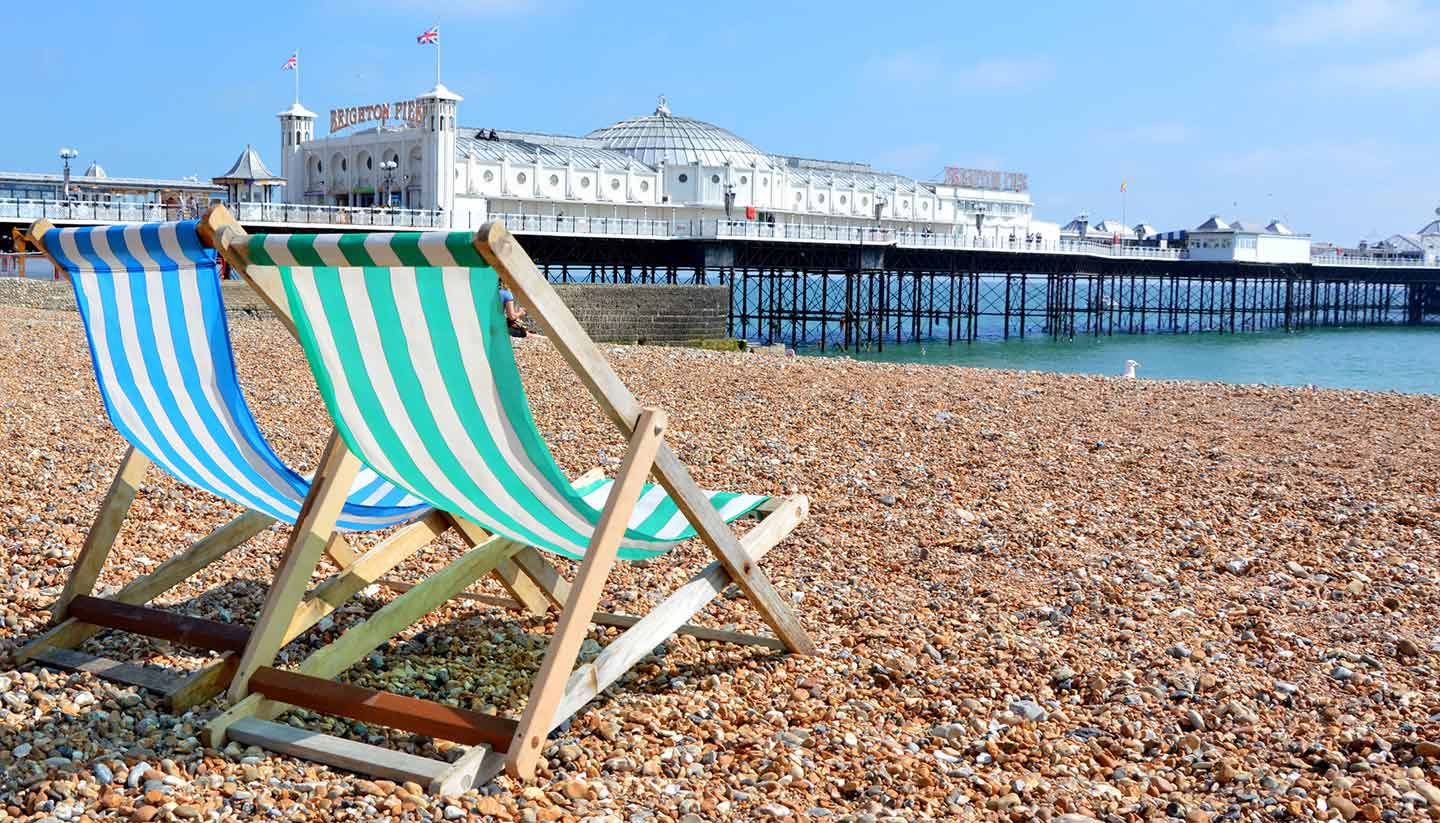Brighton History
Sunny and vibrant Brighton was one of Europe’s first great seaside resorts.
A fashion for sea-water cures around the middle of the 18th century coincided with the beginnings of seaside tourism generally, and the result was the transformation of the old fishing town of Brighthelmstone into the modern sea resort of Brighton.
Prince Regent George IV ordered the construction of the city's most famous landmark, the Royal Pavilion, during the early 19th century.
The Prince Regent’s patronage made Brighton both famous and fashionable. By the time the railway between London and Brighton arrived in 1841, the age of modern tourism had truly descended on the city, bringing an estimated 250,000 annual visitors even before 1850.
Brighton's popularity saw the building of a number of seafront hotels, including the Grand Hotel in 1864, and the Metropole Hotel in 1890.
In 1823, the Royal Suspension Chain Pier was built, initially as a landing point for boats. Sadly, it had already been earmarked for destruction when a storm hit in 1896 and saw it crumble.
Today, one of the landmarks of Brighton’s seafront is the burnt-out remains of the West Pier, built in 1866 by renowned pier architect Eugenius Birch.
The pier closed in 1975, and a storm in 2002 caused a partial collapse. Next, the pier’s main concert hall fell apart, and in 2003 a fire caused further damage. Two more fires followed, and in 2004 the middle of the pier disintegrated. Another chunk dropped off in 2014.
The Brighton Marine Palace and Pier, which opened in May 1899, has seen its own fair share of dramas. A storm in 1973 smashed a barge into the end of the pier and it suffered fire damage in 2003, but it’s still going strong today.
Did you know?
• The Duke of York’s Picture House opened in 1910 and claims to be the UK’s oldest continuously operating cinema.
• When Fat Boy Slim performed a free concert on Brighton Beach in 2002, a quarter of a million fans turned up; he’d expected 60,000.
• Brighton elected the UK’s first ever Green MP, Caroline Lucas, in 2010.


